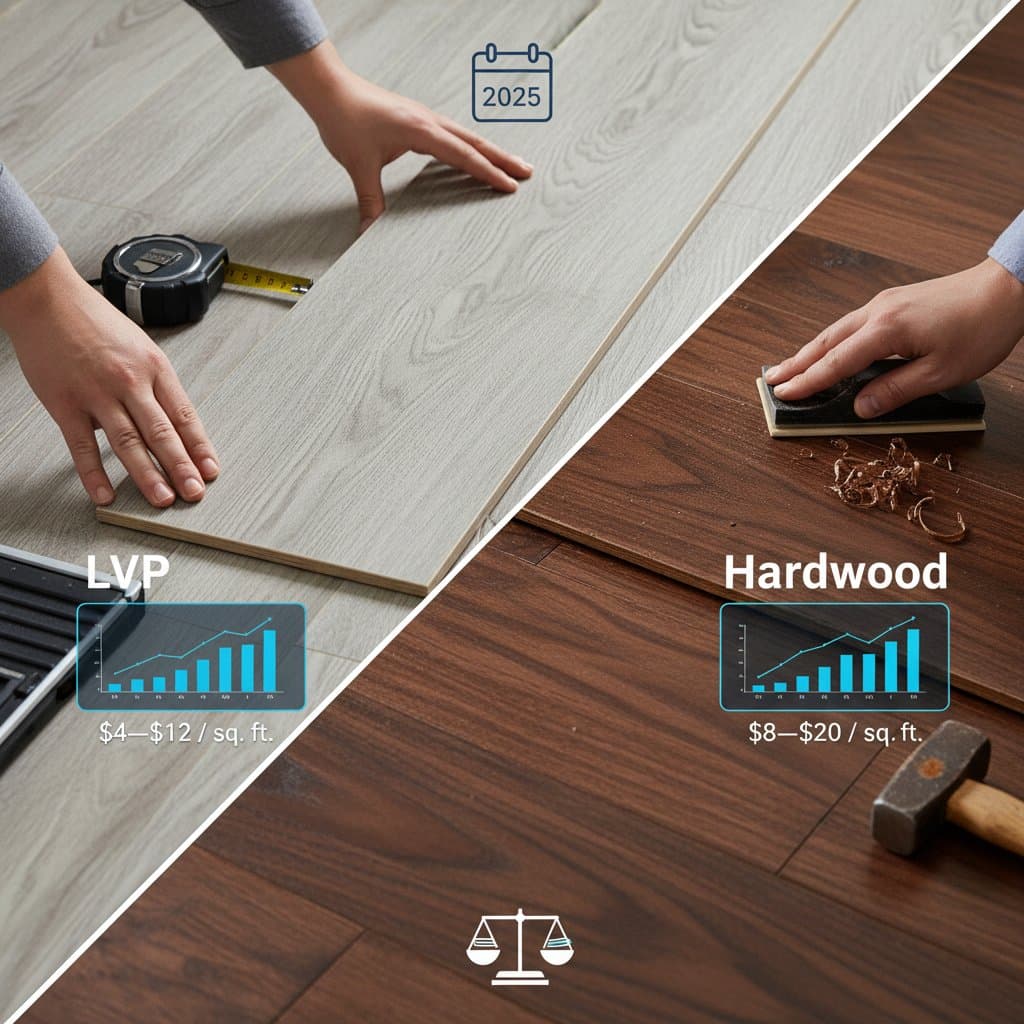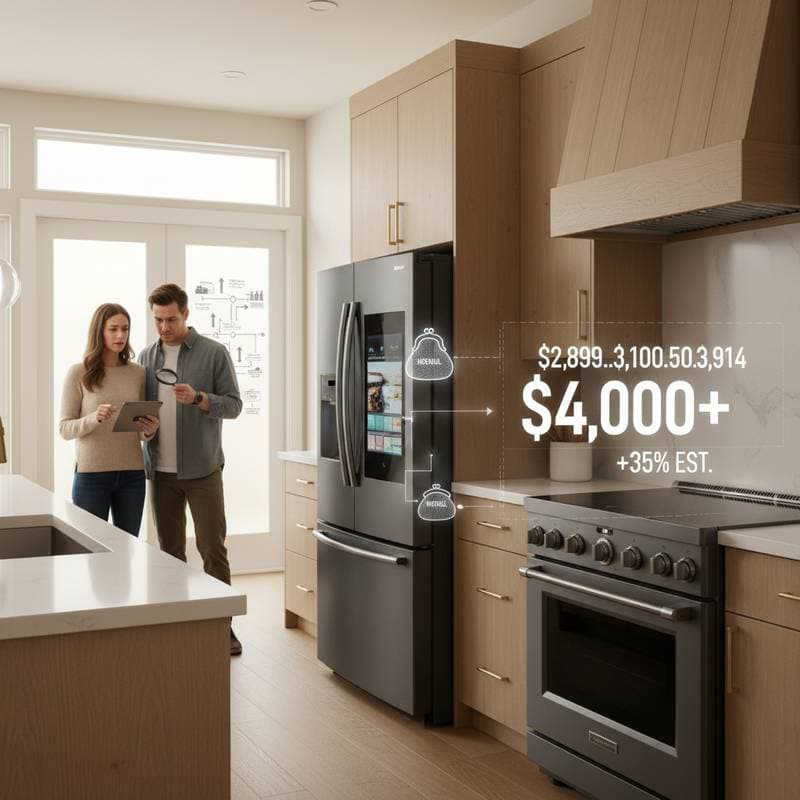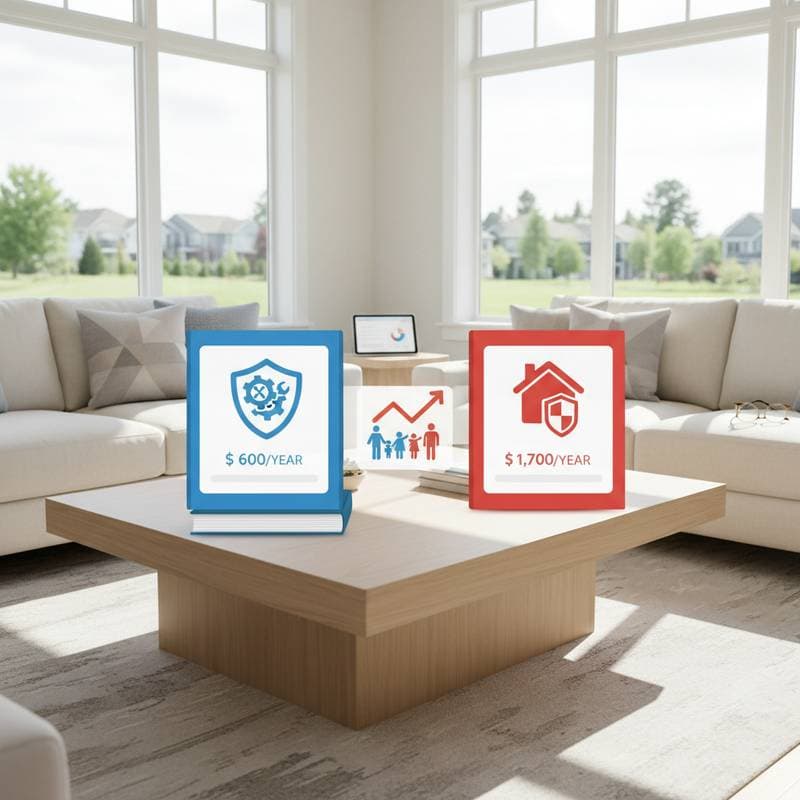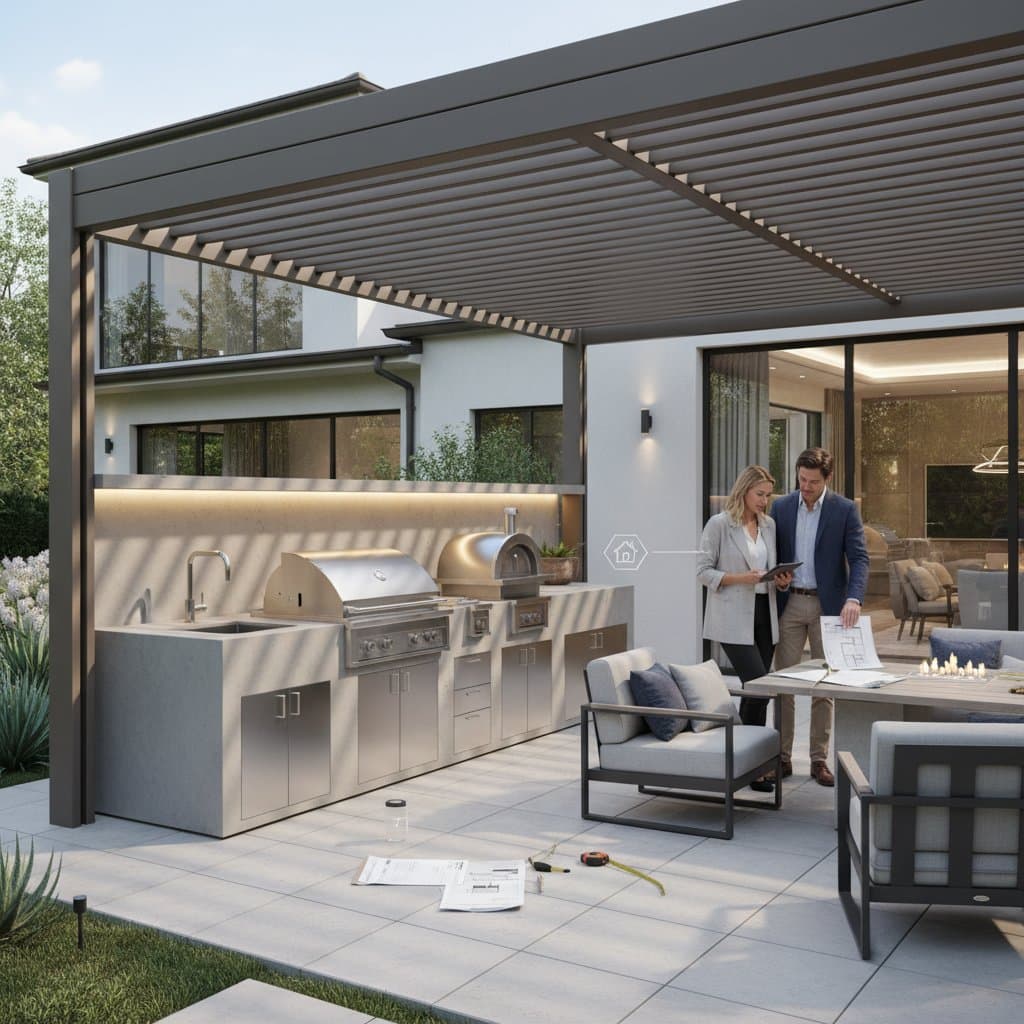2025 LVP vs Hardwood Flooring Costs: A Complete Pricing Guide
Luxury vinyl plank flooring, known as LVP, mimics hardwood aesthetics while offering superior moisture and scratch resistance. Installed LVP ranges from $4 to $12 per square foot, compared to $8 to $20 per square foot for hardwood. National averages stand at $7 per square foot for LVP and $12 per square foot for hardwood.
Three key elements influence these prices: material quality, installation complexity, and project size. Regional labor variations and brand choices can adjust costs by up to 25 percent. Data from the National Wood Flooring Association indicates that well-installed hardwood raises home value by as much as 5 percent, whereas LVP excels in cost-effective durability with low maintenance demands. Base your decision on lifestyle needs, financial limits, and desired home aesthetics or resale benefits.
Cost Breakdown by Component
Both LVP and hardwood prices combine materials and labor on a per-square-foot basis. LVP costs often cover underlayment and adhesive, but hardwood may incur extra charges for sanding, sealing, and finishing.
Core Pricing Ranges
- LVP Installed: $4 to $12 per square foot
- Hardwood Installed: $8 to $20 per square foot
- Minimum Project Fee: $500 to $750 for small or partial-room jobs
Basic LVP setups average $5 per square foot at the lower end, $7 for mid-range, and $10 or higher for premium options. Hardwood starts at $9 per square foot for simple oak and climbs to $18 for exotic varieties like Brazilian cherry or walnut.
Urban areas drive up expenses through elevated labor and disposal fees, while rural locations offer savings of up to 15 percent, though qualified installers prove harder to find.
Impact of Project Scale
Larger areas reduce per-square-foot costs by distributing fixed expenses. A 200-square-foot room costs about $1,400 for LVP and $2,400 for hardwood. Every additional 100 square feet adds $500 to $1,000, based on the material.
Projects over 1,000 square feet frequently secure 5 to 10 percent discounts, particularly with uniform material use throughout the home, as noted in reports from HomeAdvisor and Angi.
Material Quality Levels
Basic LVP: Options like LifeProof or TrafficMaster run $2 to $3 per square foot and endure 8 to 10 years. These handle scratches effectively but may discolor under prolonged sun exposure.
Mid-Tier LVP: Shaw Floorte or COREtec models cost $4 to $6 per square foot, with 12- to 20-mil wear layers and lifetime residential warranties.
High-End LVP: Karndean or Mannington products price at $7 to $10 per square foot, boasting lifelike textures, waterproof construction, and commercial warranties.
Basic Hardwood: Unfinished pine or oak falls between $5 and $8 per square foot.
Mid-Tier Hardwood: Maple or hickory ranges from $9 to $13 per square foot, balancing strength and visual appeal.
High-End Hardwood: Teak or Brazilian cherry exceeds $18 per square foot and lasts over 50 years with maintenance.
Factors Affecting Installation Complexity
Complex jobs elevate costs by 20 to 40 percent. Subfloor repairs or old flooring removal add $2 to $4 per square foot. Stairs, tight hallways, or odd shapes demand more labor and generate waste.
Multi-level homes incur fees for material hauling, and contractors charge extra for furniture relocation or baseboard work. Local codes may require moisture barriers or reinforcements in older structures, especially for hardwood. LVP suits humid climates better, while hardwood performs optimally in dry, stable environments.
Installation Service Options and Full Pricing
Standard packages cover essentials, while premium ones include enhancements for superior results and protection.
Standard Installation Details
Standard LVP work encompasses:
- Subfloor preparation and leveling
- Underlayment application
- Floating or glue-down placement
- Trim and threshold adjustments
This averages $4 to $8 per square foot, with labor at 40 percent of the total. Completion takes one to two days per room.
Standard hardwood involves:
- Subfloor evaluation
- Nailing or gluing planks
- Sanding and sealing
- Two polyurethane coats
Costs average $8 to $14 per square foot, varying by wood type and finish. Projects span three to five days, accounting for drying periods.
Enhanced Service Packages
Upgrades for LVP or hardwood add:
- Custom staining and matching ($2 to $4 per square foot)
- Furniture handling and waste removal ($100 to $300)
- Extended warranties and maintenance (10 to 15 percent of base cost)
Premium hardwood finishes push prices to $16 to $20 per square foot, yielding a polished look and extended durability. Remodeling Magazine data shows 70 to 80 percent cost recovery on resale for such investments. LVP enhancements cost 15 percent more but deliver waterproofing and lifetime coverage to cut future upkeep.
Common Add-On Services
| Service | Cost Range | Primary Benefit |
|---|---|---|
| Old Flooring Removal | $1.50 to $3 per square foot | Ensures solid base preparation |
| Baseboard Replacement | $4 to $8 per linear foot | Improves overall finish |
| Moisture Barrier | $0.50 to $1 per square foot | Prolongs material life |
| Furniture Relocation | $100 to $300 | Prevents damage and speeds work |
| Acoustic Underlayment | $1 to $2 per square foot | Minimizes floor noise |
Bundling add-ons yields 10 percent discounts. Platforms like Thumbtack and Angi simplify quote comparisons and installer vetting.
Weighing Professional Installation Against DIY
DIY Expense Overview
DIY appeals for potential savings, but requires tools and precision. LVP needs planks, underlayment, spacers, and a tapping kit, plus a miter saw, utility knife, and pull bar costing $150 to $250 to buy or $50 to $100 to rent.
Materials total $2 to $5 per square foot, bringing overall DIY to $3 to $7 per square foot. Errors in leveling or cutting often necessitate professional fixes, erasing gains.
Hardwood DIY demands more: materials at $5 to $15 per square foot, and rentals for nailers, sanders, and applicators over $500. Time and errors frequently make costs comparable to pro rates.
Benefits of Hiring Professionals
Experts ensure even results, valid warranties, and quick timelines. LVP pros finish a room in one day; hardwood teams use specialized gear for flawless sanding and finishing.
Insurance covers mishaps, and warranties last one to three years. The 20 to 30 percent expertise fee enhances longevity and home worth.
Choosing the Right Approach
Opt for DIY LVP on flat subfloors for projects under 300 square feet if you possess basic skills. Select professional hardwood for extensive areas, refinishing needs, or lasting value. Hardwood errors prove costlier than pro hires.
Strategies to Lower Flooring Expenses
Schedule for Savings
Book during slower seasons to cut 10 to 15 percent off rates. Midweek slots often undercut weekend pricing due to demand differences.
Procurement Tips
Obtain three detailed quotes to evaluate markups. Suppliers discount bulk buys or overstock by up to 20 percent. Cash payments or prompt deposits trim 5 percent from bills.
Prep to Reduce Labor
Remove old floors and baseboards yourself to save $300 to $600. Clear rooms and clean subfloors for smoother workflows. Define project details upfront to avoid costly changes.
Regional and Market Influences on Pricing
Location-Based Differences
Coastal hubs like San Francisco or New York add 25 to 30 percent via labor premiums. Midwest or Southern areas align with national norms, though skilled labor scarcity extends timelines.
Economic Trends
Supply chains affect prices: vinyl ties to petroleum, hardwood to lumber logistics. Post-pandemic labor hikes raised installs by 10 percent, yet urban competition stabilizes rates.
Securing Lasting Value from Your Flooring Choice
Align LVP with high-traffic, moisture-prone spaces for budget-friendly resilience. Invest in hardwood for enduring style and equity growth in dry areas. Both elevate home function when matched to needs, delivering returns through comfort, curb appeal, and minimal repairs over decades.



